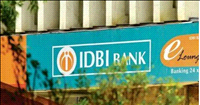Telecom equipment market grows 71 per cent
10 Jun 2005
Hyderabad: According to the 10th Indian Telecom Industry Report V&D 100 (Vol I) released by communications business magazine Voice &Data, the Indian telecom infrastructure equipment market, which saw growth drop by 34 per cent in 2003-04, saw galloping growth of 71 per cent in 2004-05 to Rs14,102 crore.
Wireless infrastructure equipment contributed to 80 per cent of the growth, while enterprise equipment market grew 27 per cent. The growth in mobile phone market (including GSM and CDMA) slowed down to 13 per cent — largely because of the drop in CDMA phone shipments.
According to the report, the Indian communications equipment market, including infrastructure, enterprise, end user equipment, and telecom software grew 43 per cent, from Rs27,845 crore in 2003-04 to Rs39,819 crore in 2004-05. The pure equipment market size stood at Rs30,376 crore in 2004-05 up from Rs21,248 crore in the previous year. Nokia emerged as the biggest equipment vendor. It was also the largest handset vendor with 55 per cent market share while LG stood a distant second with 12 per cent market share.
Some highlights:
- Enterprise networking crosses Rs 6,000 crore mark
- Telecom software market touches Rs 9,442 crore
- GSM grows 44 per cent as CDMA declines;
Nokia, Ericsson and Cisco are top 3 vendors
- GSM handset sales grew by 76 per cent
- CDMA handsets sales declined by 61 per cent
- WLAN market grew 60 per cent
- Network security grew 37 per cent
- Network integration grew 24 per cent
- VSAT business grew by 24 per cent
- Telecom cables grew 115 per cent
The report for 2004-05 is based on a survey of more than 500 Indian telecom companies spanning carrier, enterprise and end user communications equipment vendors. "The performance in 2004-05 was a result of the massive expansion of networks by almost all the wireless operators including BSNL, which continued to invest heavily in its GSM rollout," Ibrahim Ahmad, Editor, Voice &Data, said.
Growth of equipment
In the year under review enterprise equipment grew at the rate of 27 per cent, while the enterprise networking (equipment and services) market crossed the Rs6,000-crore mark. The factors that played a key role in the growth of enterprise networks was the substantial drop in prices of client devices (PCs, laptops) and the growing ubiquity of networks, and the other was the willingness among enterprises to compete at domestic and international levels. The highest growth was registered by WLAN, followed by modems and switches.
While large enterprises continued to be the major customers for most vendors, the small and medium business segment was an important focus area for all vendors. Besides the metros, growth was also driven by significant networking deployments in 'tier 2' towns like Pune, Hyderabad, and Chandigarh.
There was a lot of investment in MPLS networks and the concept of managed services around IP enabled networks gained favour with the enterprises — both large and medium businesses. Broadband rollouts also aided the adoption of networking in the enterprise segment. A significant development last year was the reach of wireless networking to homes.
Carrier Equipment
The year 2004-05 was all about wireless but despite a decline in wireline subscriber base, BSNL, MTNL, and Bharti bought wireline equipment. The telecom cables industry showed signs of revival with nearly 119 per cent growth in 2004 — 05. While telcos focused on data and applications for enhancing their ARPU and margins, broadband emerged as the natural gainer. The market was aided by the falling equipment prices. While the government's National Broadband Policy had nothing significant to offer, it did give momentum to the efforts by BSNL, MTNL, and VSNL.
According to the report, even though European and US vendors still dominate the Indian carrier equipment market, Chinese vendors are likely to make significant gains.
Mobile Handsets
In volume terms, India witnessed a total addition of around 15.4 million handsets in 2004 — 05. GSM contributed around 79.5 per cent, with 12.2 million handsets whereas CDMA contributed around 20.5 per cent, i.e., around 3.16 million. While GSM grew around 49 per cent, CDMA saw a decline of around 44 per cent. Overall, the market grew by around 13 per cent. GSM contributed 84 per cent of growth whereas CDMA contributed around 16 per cent.
The second volume for 2004-05, which will focus on telecom services and service providers, is slated for release in the first week of July 2005.
| Top Ten Vendors (FY 200405) | |||||
| Rank | Vendor | Revenue (in Rs cr) | Rank | Vendor | Revenue (in Rs cr) |
| 1 | Nokia | 7,621 | 6 | LG Electronics | 2,314 |
| 2 | Ericsson | 3,528 | 7 | Nortel | 1,615 |
| 3 | Cisco | 2,456 | 8 | TCS | 1,595 |
| 4 | Wipro | 2,365 | 9 | ITI | 1,505 |
| 5 | Motorola | 2,322 | 10 | Infosys | 1319 |


















.jpg)











